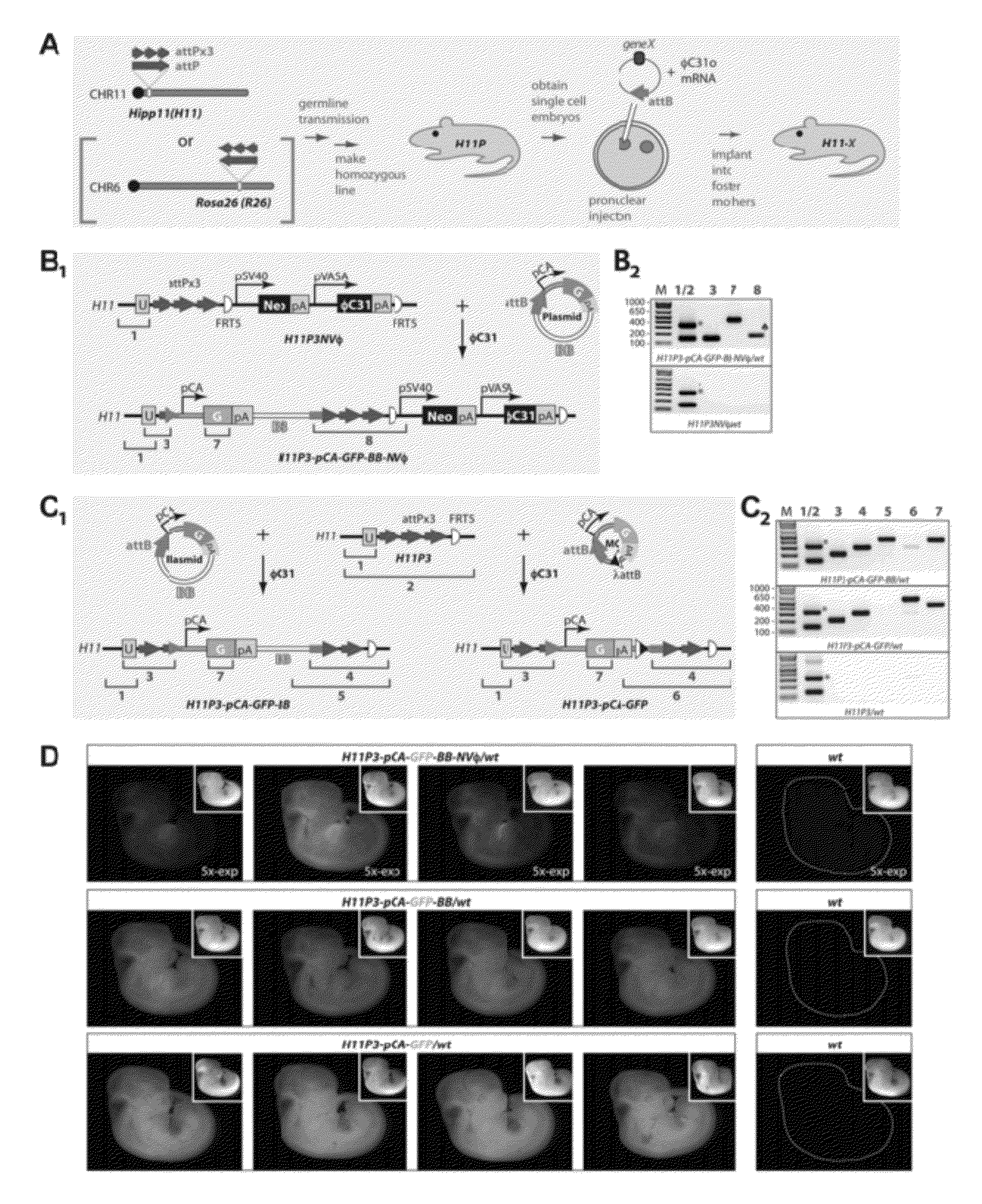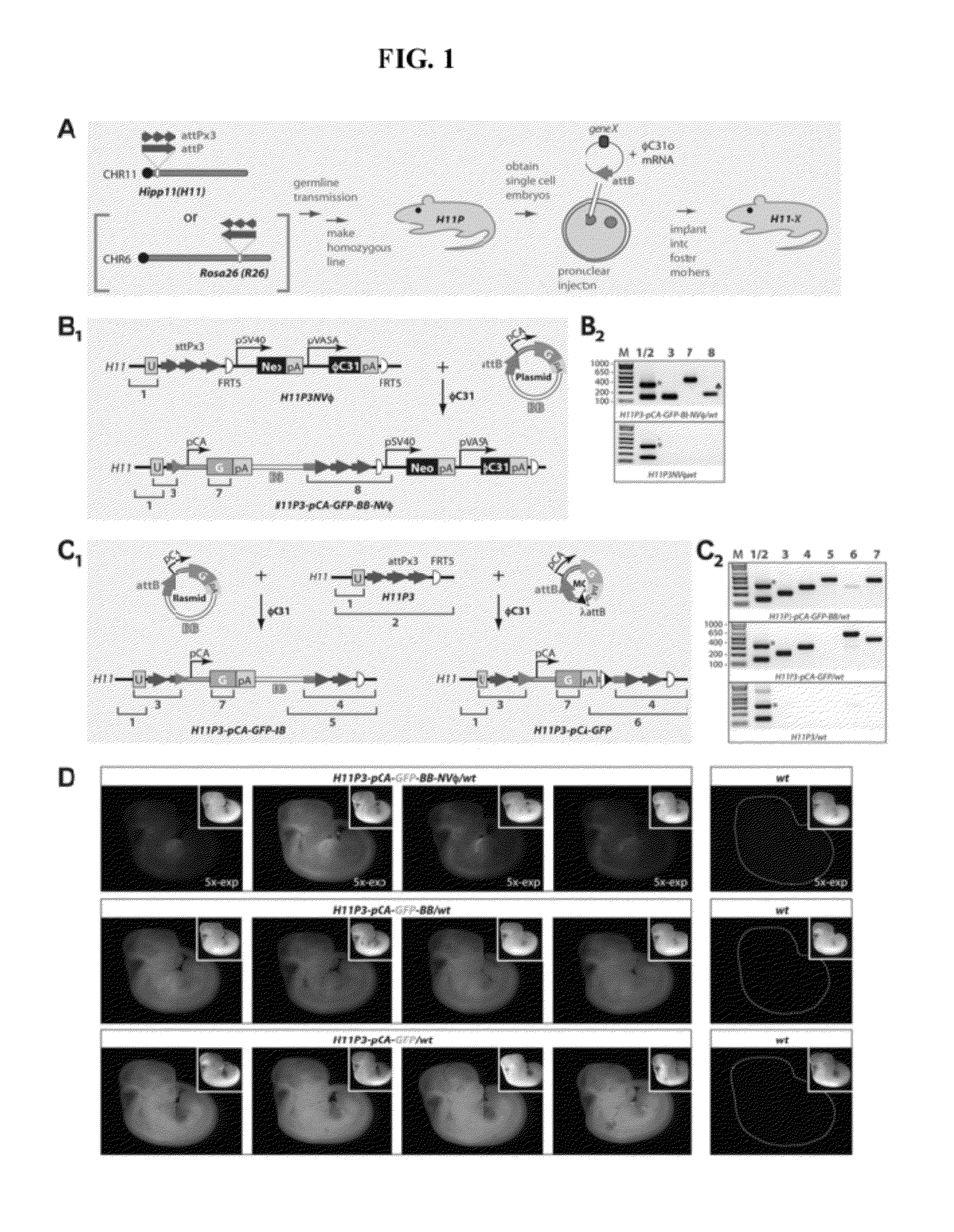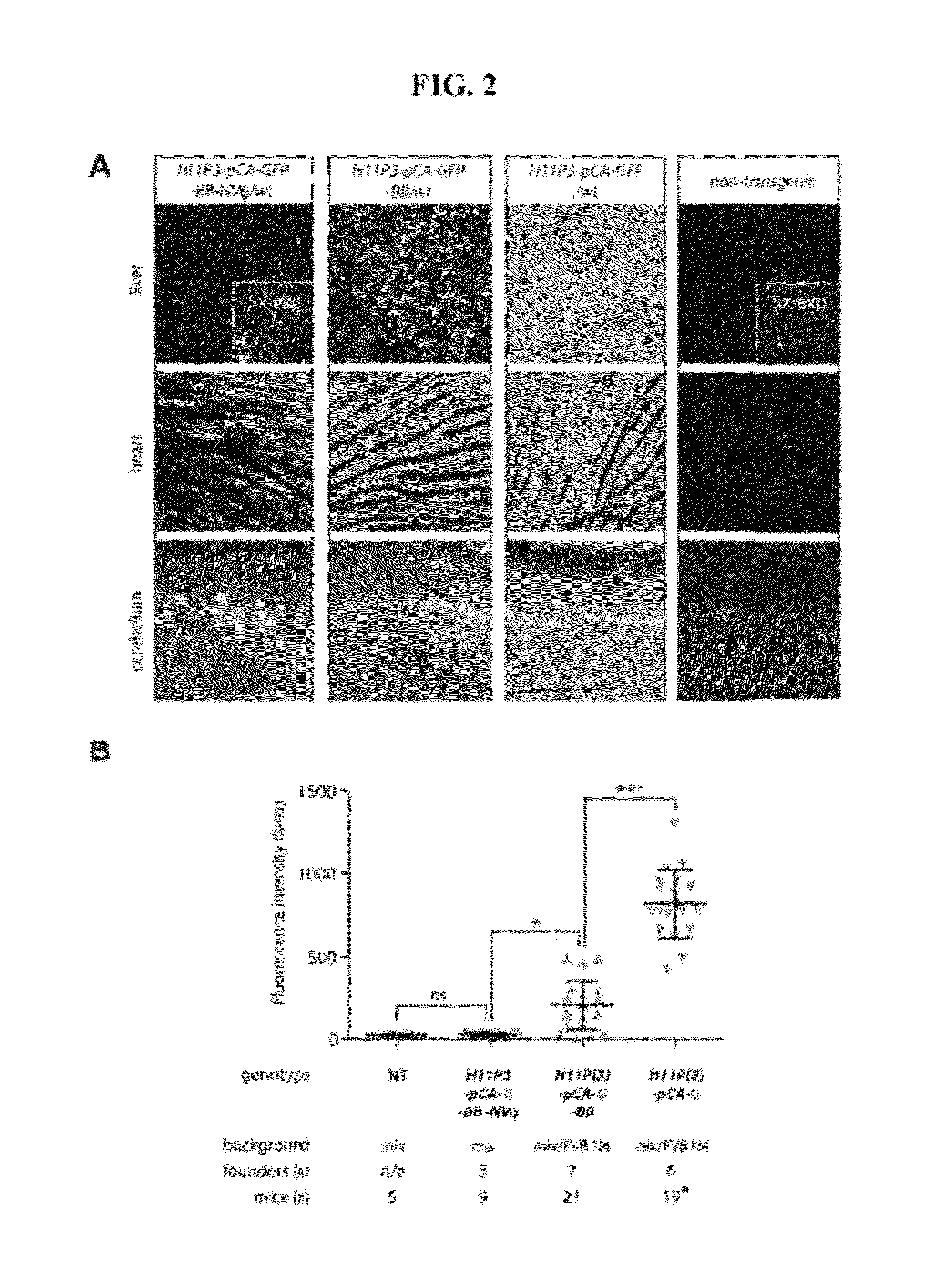Site-Directed Integration of Transgenes in Mammals
a transgene and site-directed technology, applied in the field of site-directed integration of transgenes in mammals, can solve the problems of transgene silencing or ectopic expression, inability to control the integrity and copy number of the insertion site, and the method has several limitations, so as to facilitate the understanding of the invention
- Summary
- Abstract
- Description
- Claims
- Application Information
AI Technical Summary
Benefits of technology
Problems solved by technology
Method used
Image
Examples
example 1
Pronuclear Injection in Mice
[0184]FIG. 1, panel A depicts a method for site-specific transgenesis in mice via pronuclear microinjection of a DNA / RNA mix into mouse zygotes. Both H11 and R26 loci were modified with attP sites (note the different orientation of attP sites for the two loci), but for simplicity, the scheme in FIG. 1, panel A illustrates the process for H11 only.
[0185]The method utilized the φC31 integrase from a Streptomyces phage and its recognition sites (attB and attP) to catalyze recombination between an attB site from a circular recombinant DNA, and an attP site that was inserted at a specific locus in the mouse genome. As discussed below, the method efficiently produced transgenic mice containing a site-specifically integrated single-copy transgene that was expressed globally from a ubiquitous promoter.
[0186]To generate embryos containing attP sites for φC31 integrase-mediated transgenesis, standard homologous recombination-based methods were used in mouse ES cell...
example 2
Cassette Exchange DNA Insertion in Mice
[0190]As an alternative to insertion of DNA at a single attP site, a plasmid in which pCA-GFP is flanked by two attB sites (pattB-pCA-GFP-attB) was injected into H11P3 homozygous embryos. This approach allows φC31 integrase to catalyze a recombinase-mediated cassette exchange reaction (FIG. 7, bottom right). Integration of the circular pattB-pCA-GFP-attB plasmid into H11P3 was tested, and resulted in successful cassette exchange as confirmed by PCR (FIG. 7, bottom right, and Table 2, row 4). In these experiments, insertion of a full plasmid was never detected. The integrated transgenes were properly transmitted from founders to progeny (Table 3). Both the cassette-exchange strategy and the strategy described above in Example 1 resulted in broad and high-level GFP expression in pCA-GFP transgenic mice (FIG. 7, right, FIG. 8, panel D, and FIG. 10, panel C, bottom).
TABLE 2Efficiency of site-specific integration.DNA size,SS, %R F0R, %RowDNA*DNA typ...
example 3
PCR Test for Transgene Integration into the H11 Locus
[0191]A series of experiments were carried out to test integration of transgenes at the knocked-in attP sites. First, a circular plasmid, pattB-pCA-GFP, was injected into embryos homozygous for attPx3 and the VASA cassette knocked-in at the H11 locus (H11P3NVφ). The injected plasmid contained a “full-length” attB site and the sequence for a thermotolerant GFP (Siemering K R et al. (1996) Curr Biol 6:1653; Okada A et al. (1999) Exp Neurol 156:394) driven by the ubiquitous pCA promoter (FIG. 1, panel B1). F0 embryos were analyzed at embryonic day 10 or 11 (E10 / E11) by PCR to detect newly-formed junctions due to site-specific insertions (FIG. 1, panel B2). Site-specific integrations (0 / 32 F0s; Table 2) were not detected despite occasional random integrations. It was possible that the VASA promoter did not promote sufficient φC31o expression to enable site-specific insertions. In vitro transcribed mRNA for φC31o was then co-injected w...
PUM
| Property | Measurement | Unit |
|---|---|---|
| Molar density | aaaaa | aaaaa |
| Molar density | aaaaa | aaaaa |
| Molar density | aaaaa | aaaaa |
Abstract
Description
Claims
Application Information
 Login to View More
Login to View More - R&D
- Intellectual Property
- Life Sciences
- Materials
- Tech Scout
- Unparalleled Data Quality
- Higher Quality Content
- 60% Fewer Hallucinations
Browse by: Latest US Patents, China's latest patents, Technical Efficacy Thesaurus, Application Domain, Technology Topic, Popular Technical Reports.
© 2025 PatSnap. All rights reserved.Legal|Privacy policy|Modern Slavery Act Transparency Statement|Sitemap|About US| Contact US: help@patsnap.com



